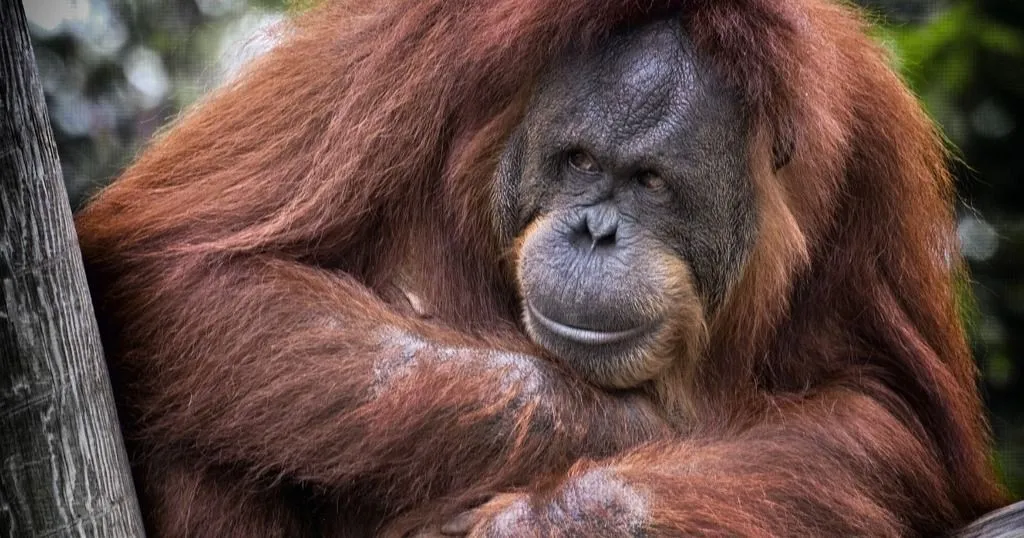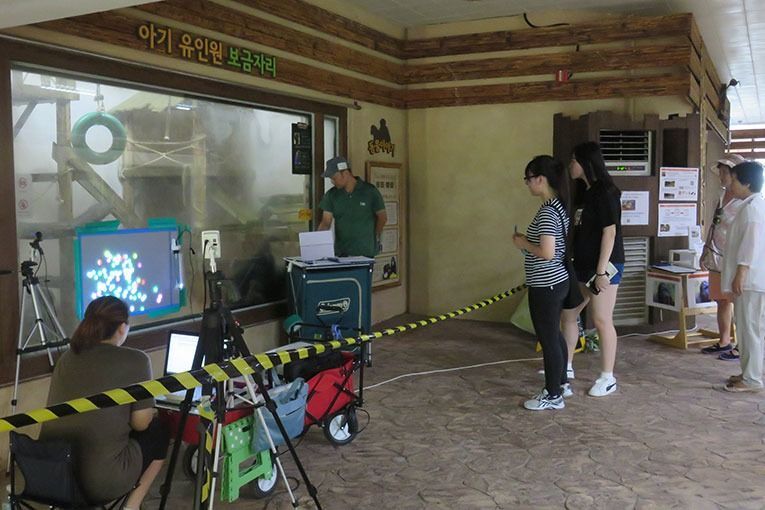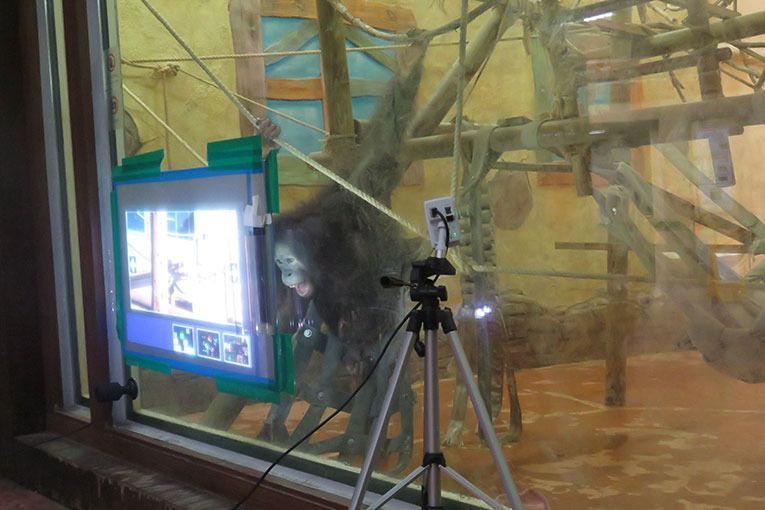Free-choice digital interactive enrichment and human-animal interaction
Great apes have fast reflex, gazes, and movements: The Observer XT’s features allow frame by frame coding and accurate data integration.
Posted by
Published on
Mon 06 Feb. 2017
Topics
| Welfare | Animal-human Interaction | MediaRecorder | Primates | The Observer XT | Stimuli |

Read this guest blog post about an Australian National University PhD research at the Seoul Zoo by Nicky Kim-McCormack and colleagues.
Measuring changes in captive great ape welfare and conservation attitudes
As orangutan (Pongo spp.) and chimpanzee (Pan troglodytes) populations decrease, captive individuals play an important role in species’ conservation management making information about their cognitive stimuli and enrichment essential.

Essential study on digital cognitive stimuli offering freedom of choice
There is a growing empirical support demonstrating improved welfare in captive animals when they can exert control over their environment (1). Research shows that great apes can successfully interact with digital media devices (2&3) and there can be behavioral changes when presented with digital enrichments (4). However, to date, there have been no studies that look at the effect of free-choice using digital interactive mediums, and the implementation’s impact on human visitors’ attitudes towards the animals and their conservation.

What is best for the great apes’ well-being?
Assumptions are often made that natural enrichments produce better welfare.5 and strive to offer activities that mimic wild behaviors. Such anthropomorphic and broad-stroke views should be avoided when considering new enrichment strategies (4&6). If the animal’s well-being is considered paramount, enrichment strategies should be based on scientific study outcomes rather than from potential anthropomorphic bias.
In light of this, the study investigates whether the provision of freedom of choice and control, can improve welfare using a novel digital touch-glass technology. In addition, we will look at the effects of Human-Animal interaction (HAI) from animal welfare and visitor perspectives, by looking at whether a direct interactivity/experience through digital technology can lead to greater conversation awareness and changes in attitudes.
Accurate data integration
To measure the changes in welfare of Seoul Zoo’s six orangutans and four chimpanzees using the digital enrichment, we used Noldus’ Media Recorder via their IP cameras to capture the study sessions. The videos were directly linked to The Observer XT along with the interactive touch points custom imported directly into the program and thereby negating the need for extremely time-consuming manual handling of data.
792 videos of pre, post and study session observations will be coded in the coming months using The Observer XT, where six controlled phases will be analysed against baseline observations to determine any changes in the animals’ behaviour and stress levels.
Preliminary results
Great apes’ (especially chimpanzees) have fast reflex, gazes, and movements, and The Observer XT’s features not only allow frame by frame coding as needed, it also handles external data logs with some customisations. Although the video coding is at its infancy and progress is slow, preliminary qualitative results show that:
- Orangutans and chimpanzees can interact with digital touch-glass devices.
- Younger animals appeared to have higher engagement with the digital enrichment activities.
- As the phases progressed and visitors observed increasing level of choices for the animals and experienced HAI, positive changes in attitude increased as the negative responses decreased.
FREE TRIAL: Try The Observer XT yourself!
Request a free trial and see for yourself how easy behavioral research can be!
- Work faster
- Reduce costs
- Get better data
References
- Cocks, L. (2007) Orangutan species survival plan: Husbandry Manual, C. S. Sodaro ed., Chicago Zoological Gardens.
- Perdue, B.M.; Clay, A.W.; Gaalema, D.E.; Maple, T.L.; Stoinski, T.S. (2012). Technology at the zoo: The influence of a touchscreen computer on orangutans and zoo visitors. Zoo Biology, 31, 27-39.
- Boostrom, H (2013). Problem-solving with Orangutans (Pongo pygmaeus and Pongo abelii) and Chimpanzees (Pan troglodytes): Using the iPad to provide novel enrichment opportunities, Department of Wildlife and Fisheries Science of Texas A&M University, Unpublished Master’s thesis.
- Woolverton, W.L.; Ator, N.A., Beardsley, P.M.; Carroll, M.E. (1989). Effects of environmental conditions on the psychological wellbeing of primates: A review of the literature. Life Sciences, 44, 901-917, Pergamon Press
- Wells, D.L. (2009). Sensory stimulation as environmental enrichment for captive animals: A review. Applied Animal Behaviour Science, 118, 1-11.
- Kim-McCormack, N.E.; Smith, C.L.; Behie, A. M. (2016). Is interactive technology a relevant and effective enrichment for captive great apes? Applied Animal Behavioural Science, 185, 1-8.
Authors
Nicky N.E. Kim-McCormack1, Carolynn L. Smith2, Pauline Ding1, Jae C. Choe3, Colin P. Groves1 & Alison M. Behie1
1) School of Arch. & Anth., The Australian National University, ACT, Australia
2) Dept. of Biology, Macquarie University, NSW, Australia
3) National Institute of Ecology, South Korea
Related Posts

Ladybugs and lacewings do not spy on their prey’s alarm pheromone
![Neuroscience conferences in 2020 [UPDATED]](https://mescalero.noldus.com/storage/core-blog/neuroscience-conferences-2020.webp)
Neuroscience conferences in 2020 [UPDATED]
